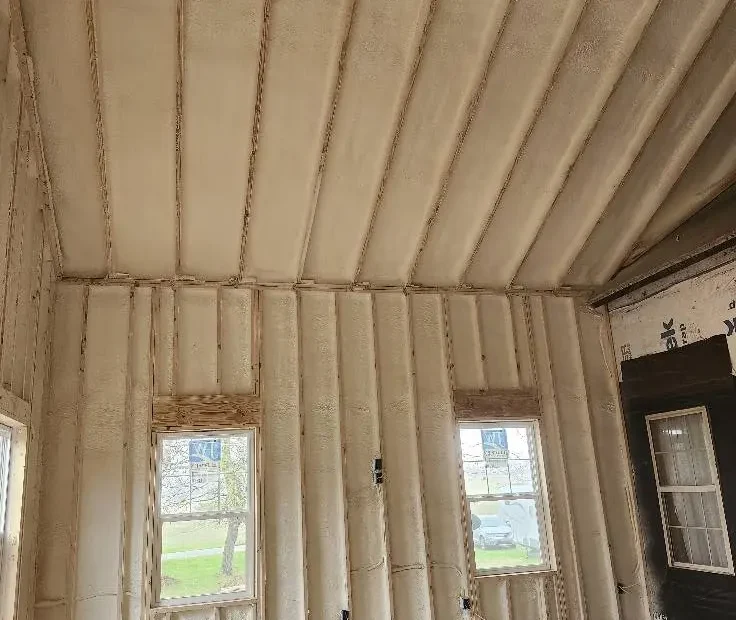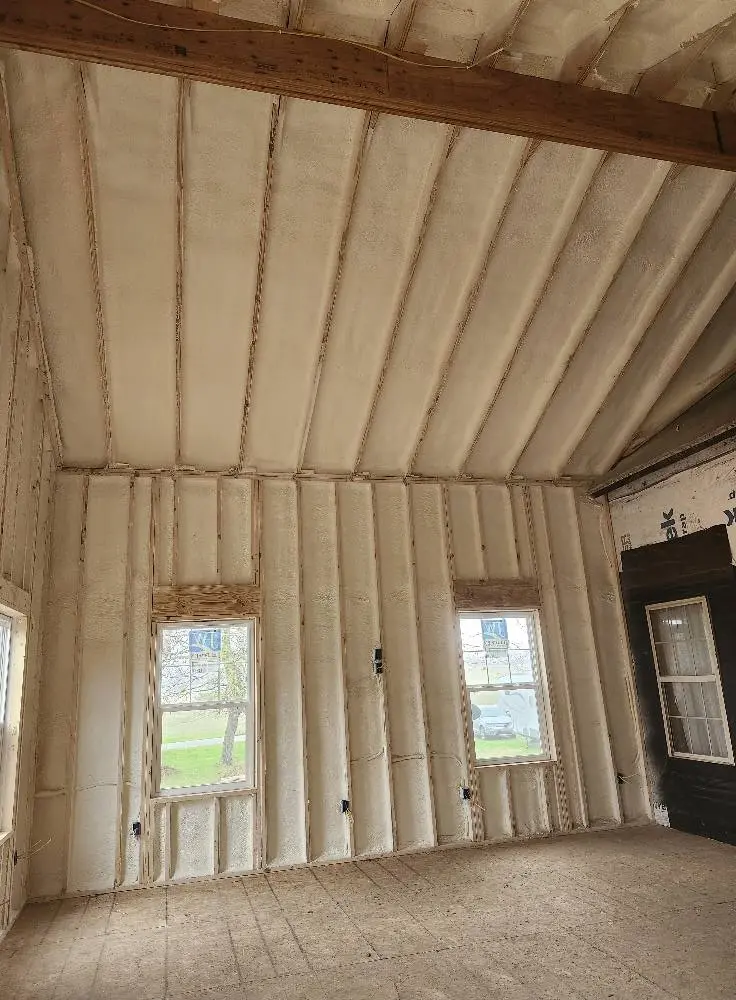Spray foam insulation is an increasingly popular choice for grow rooms due to its superior thermal resistance and air sealing capabilities. Many growers have questions about how it can benefit their operations, what the installation process entails, and how it compares to other insulation types. This blog will address the most frequently asked questions surrounding spray foam insulation specifically for grow rooms, providing insights to help you make informed decisions for your indoor gardening projects.
1. What Is Spray Foam Insulation?
Spray foam insulation is a polyurethane-based material that is applied as a liquid and then expands to fill gaps and cavities. This expansion creates a solid barrier that effectively seals off the environment, making it an excellent choice for grow rooms where maintaining a controlled atmosphere is vital. The versatility of spray foam allows it to adhere to various surfaces, ensuring that every nook and cranny is insulated. This type of insulation not only prevents air leakage but also enhances the energy efficiency of the space, leading to improved conditions for plant growth.
One of the key features of spray foam insulation is its dual function: it serves not only as an insulator but also as an air barrier. This characteristic is crucial for growers who need to manage temperature and humidity levels effectively. By reducing the infiltration of outside air, growers can maintain more stable environments, which is critical for optimizing plant health and maximizing yields.
2. How Does Spray Foam Insulation Work?
The application of spray foam insulation begins with a chemical reaction that occurs when the two main components—polyol resin and isocyanate—are mixed together. This reaction yields a foam that expands rapidly upon contact with air. As it expands, it fills every gap and crevice, creating an airtight seal that minimizes air leakage. This process is particularly beneficial in grow rooms, where unregulated airflow can lead to temperature fluctuations that negatively affect plant growth.
Once applied, the foam quickly solidifies into a rigid structure, forming a continuous barrier against the outside environment. This is not just an insulation factor; the air-tightness provided by spray foam also prevents moisture buildup, thus minimizing the risk of mold and mildew. By effectively managing both heat and humidity, spray foam insulation helps create an optimal environment for plants to thrive.
3. What Are the Benefits of Using Spray Foam in Grow Rooms?
Using spray foam insulation in your grow room comes with numerous advantages. First and foremost, its high R-value indicates superior thermal resistance, which means better temperature regulation. When combined with the air-sealing properties, this can result in significant energy savings, as climate control systems won’t have to work as hard to maintain desired conditions. This aspect can translate to lower electricity bills over time, making it an economically savvy investment.
Moreover, spray foam insulation is known for its longevity. Unlike traditional insulation materials that may settle or degrade over time, spray foam maintains its integrity, thus providing long-term performance. This ensures that your insulation investment continues to offer benefits throughout its lifespan. By making your grow room energy-efficient while fostering a healthier environment for your plants, spray foam insulation stands out as a compelling option.
4. Is Spray Foam Insulation Safe for Plants?
The safety of spray foam insulation for plants often concerns growers, and rightly so. When properly installed and allowed to cure, spray foam is generally safe for plant life. It is essential, however, to ensure that any chemicals used during installation are fully cured before introducing plants to the space. This mitigates any potential exposure to harmful compounds that could arise from uncured foam. Always select products that are specifically designed for indoor use, as many modern formulations are low in volatile organic compounds (VOCs), making them safer for your plants.
Additionally, spray foam insulation acts as a barrier against moisture intrusion, which can help protect against mold and mildew—two adversaries for any grower. By providing a cleaner and more controlled environment, you’re not only ensuring the safety of the plants but also promoting their overall health as they have fewer threats to contend with. Always keep in mind the importance of proper curing times and ventilation during installation to maintain a safe environment for your plants.
5. How Much Does Spray Foam Insulation Cost?
The cost of spray foam insulation varies based on several factors, including the type of foam, the thickness required, and the size of the area being insulated. On average, the price can range from (0.40 to over )1.50 per board foot for materials alone, depending on the quality and type of spray foam used. Additionally, labor costs can significantly influence the overall expenditure, especially if professional installation is recommended for optimal results.
While the initial investment may seem higher when compared to traditional insulation methods, it’s important to view it through the lens of long-term savings. The energy efficiency provided by spray foam can drastically reduce heating and cooling costs, leading to lower monthly utility bills. Moreover, its durability means you’ll avoid frequent replacements or repairs that are common with other insulation types, making spray foam insulation a wise financial choice in the long run.
6. Can You Install Spray Foam Insulation Yourself?
While it is possible for homeowners to install spray foam insulation themselves, it is not recommended unless you have the necessary experience and equipment. Proper installation requires specific training, as incorrect application can lead to significant issues such as air leaks or improper curing, which can negate the benefits of the insulation itself. Moreover, the material involves working with chemicals that can be hazardous without the right protective gear and ventilation.
For most growers, hiring a professional is the best route. Professionals not only ensure that the insulation is installed correctly, but they also understand local building codes and regulations, which can save you time and effort in the long run. Investing in expert installation can lead to more effective results, ultimately making your grow room more efficient and conducive to your plants’ growth.
7. What Is the Lifespan of Spray Foam Insulation?
One of the most compelling benefits of spray foam insulation is its impressive lifespan. When applied correctly, spray foam can last over 20 years without needing repairs or replacement. This longevity makes it a cost-effective choice for growers who want to invest in an insulation solution that won’t require constant upkeep. Its robust properties help to withstand various environmental conditions, ensuring that it continues to perform effectively throughout its lifespan.
Additionally, due to its resistant nature to moisture and pests, you won’t have to worry about mold or insect damage that can plague other types of insulation. Therefore, the investment in spray foam insulation not only pays off in energy savings but also in the peace of mind it provides over its extended life. Consistently maintaining optimal conditions for your plants is essential, and having insulation that you can rely on contributes significantly to that goal.
8. How Does Spray Foam Compare to Other Insulation Types?
When comparing spray foam insulation to traditional materials like fiberglass or cellulose, spray foam stands out in several key areas. Most notably, spray foam has a substantially higher R-value, meaning it offers better thermal resistance per inch than other insulating materials. This efficiency translates to enhanced climate control for your grow room, allowing for better regulation of temperature and humidity, which is crucial for successful indoor gardening.
Additionally, spray foam insulation eliminates air leaks that often plague traditional insulation types. Where fiberglass can leave gaps, spray foam expands to fill every crack, ensuring that your environment is tightly sealed. This characteristic not only improves energy efficiency but also enhances the overall comfort and stability of the grow room, which directly affects plant growth. Overall, while spray foam may require a higher upfront investment, the long-term benefits often justify the cost.
9. What Should You Consider Before Installation?
Before proceeding with the installation of spray foam insulation, several considerations should be taken into account to ensure optimal results. Firstly, assessing the specific needs of your grow room is vital. Consider factors such as size, existing insulation, and ventilation requirements to determine the best approach for your unique setup. Understanding these elements can help you choose between open-cell or closed-cell foam, which have different properties and applications.
Furthermore, the timing of the installation is crucial. For example, effective curing requires specific temperature and humidity levels, so the installation should ideally take place when environmental conditions are optimal. Finally, considering your budget and whether to hire a professional can significantly impact your experience. While DIY might save money upfront, hiring an expert can ensure that the installation is done correctly, ultimately safeguarding your investment in both the insulation and your plants.
10. Are There Any Downsides to Using Spray Foam Insulation?
While spray foam insulation boasts many advantages, it is crucial to consider potential downsides before making a decision. One significant concern is the upfront cost, which can be significantly higher than traditional insulation materials. This initial investment may deter some growers, although many find that the long-term savings and benefits outweigh these costs.
Moreover, the installation process can be complex and may require professional assistance to ensure it is applied correctly. Failure to install it properly can lead to problems such as inadequate sealing or off-gassing from uncured foam. Additionally, while it’s largely safe, some people have reported sensitivities or allergic reactions to the chemicals used in spray foam. It’s essential to weigh these potential drawbacks against the benefits and consult with professionals to make the most informed choice for your specific growing environment.

